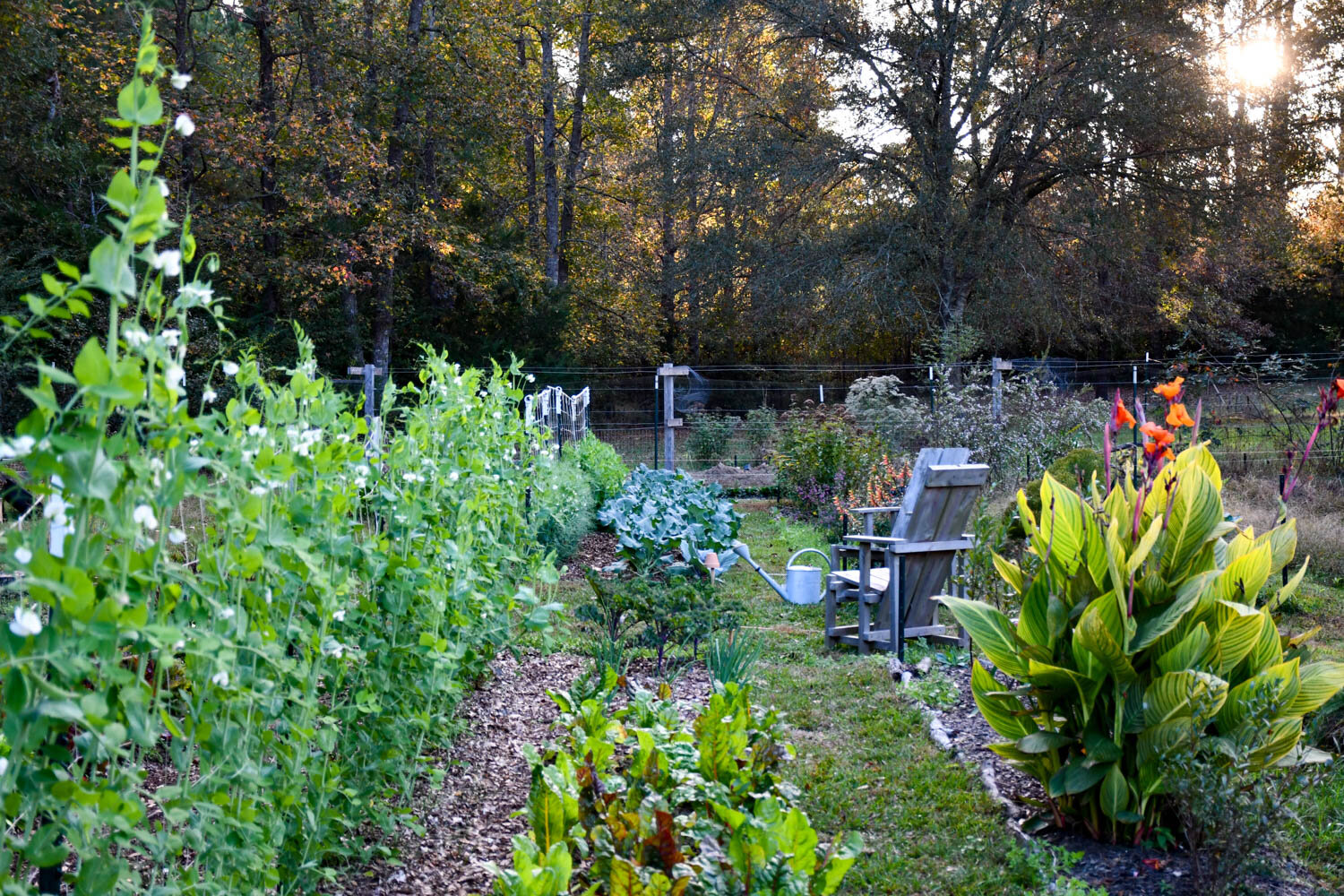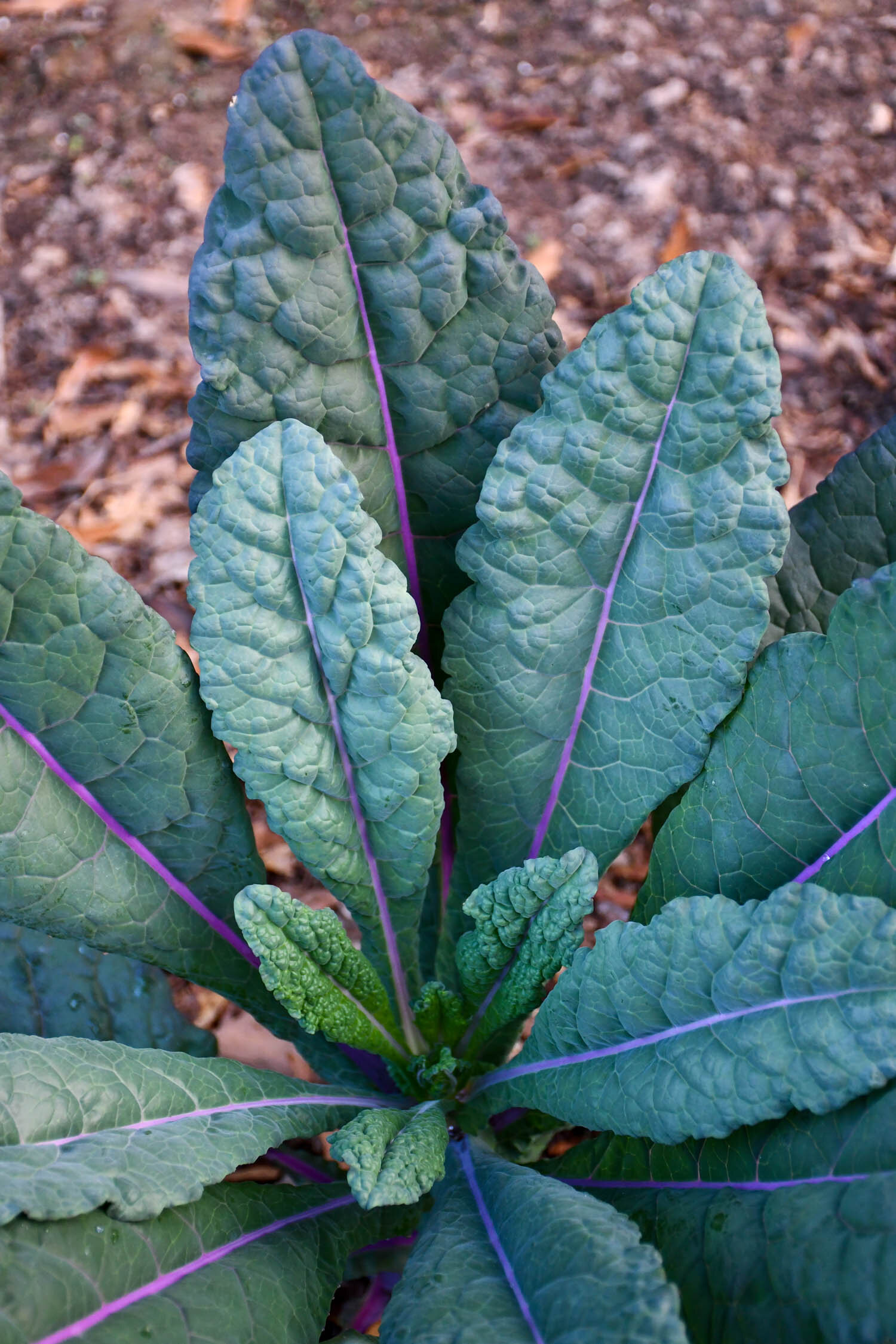Just outside our garage—maybe 100 steps to the north—is a garden that we call the patch. It is surrounded by a double fence, mainly to keep out deer, boar, armadillos, and rabbits. This area is hard to just call it a vegetable garden because so much grows inside. Because of its security, I have planted many plants inside, and the patch houses a variety of perennials, cut flowers, carnivorous plants, and propagules. However, the back part is planted mostly with vegetables. I have to admit in the three years that we’ve lived here, this year is the best it has looked and the most productive it has been. I think it’s because the garden is finally settling into its own. I’ve had to take the design through a few iterations, mainly due to some rare flooding that can occur to make sure that the edibles are located out of the inundation zone. But, we are in the final layout where from here on out the bones should all be laid for the pathways and the beds.
Also, I have an organic matter system from collecting leaves on our 2.5 acres as well as bags of leaves sent to the curb in town. (Don’t worry. I always leave some leaves in our yard for my insect friends!) All of that organic matter is funneled to this garden.
But, another reason it looks good is because November is a time my fall vegetable garden reaches its zenith from the little warmth left of summer and the absence of a hard frost yet from winter. We have been delighted from all the produce we’ve harvested so far this winter from it.
I spoke to a group of gardeners with the Huntsville Botanical Garden earlier this week via a webinar about the joys of cool-season gardening, and I took a plethora of pictures of the patch for that presentation. I wanted to share a few of these photos with you so maybe I could even whet your appetite for gardening on the darker side of the calendar.
The front of the vegetable garden in the patch. To the right is the swale, a three-foot wide depression I had to dig to help direct water through the property. It hasn’t really been landscaped much yet beyond the few perennials I’ve stuck there for holding.
A photo from the other side looking toward the neighbors.
I had a challenging time getting peas going. They just collapsed from a fungal disease early on. A later sowing of' ‘Sugar Snap’ didn’t die and now are blooming.
Early issues with peas forced me to buy some additional varieties. Here you see the disease resistant ‘PLS 595’ at the front and ‘PLS 141’ at the back. The broccoli also looks good with a mulch of leaf mold.
A close up of ‘PLS 595’. Even the tendrils are edible!
A much better crop of peas from ‘PLS 595’
Watching videos of Conor Crickmore of Neversink Farm inspired me to try this new approach to trellising peas. PVC T-joints help to support electrical conduit holding nylon twine.
One of Karen’s favorites is Swiss chard (and mine, too!). She enjoys it even better than lettuce in salads! Here the rainbow colors from the ‘Bright Lights’ mix glows warm in the morning.
The always beautiful ‘Ruby King’ cabbage
Carrots, spinach, and kohlrabi are coming right along. I will continue sowing spinach and carrots into January.
And, collards have been fun to pick. I love sautéing them with bacon grease, a little brown sugar, and garlic.
One of my favorite kales! Every time I see ‘Dazzling Blue’ I want to throw up jazz hands. *Jazz hands*
And, there are other plants in the patch like this Cuphea micropetala. The warm-colored petals and blues in the broccoli foliage behind are a nice contrast.












